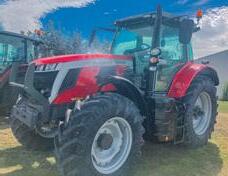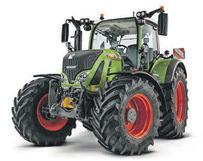


























Wonderful day out for family and whānau






























Nationally, RDA provides more than 3000 children and adults with lifechanging opportunities every year. In Wairarapa, up to 28 children are currently accepted each year for a programme of activities with currently, eight horses.
Each rider is always accompanied by at least two volunteers. The ‘leader’ or handler focuses on the horse: its attitude, movement, and behaviour. The sidewalkers focus on the rider: supporting them physically, emotionally, and with their exercises. The RDA complex has up to four coaches who develop individualised programmes tailored to the needs and conditions of each rider, covering therapeutic, education, and sport and recrelation elements.
“The children learn con dence and can become more relaxed and less anxious as they ride their horses,” says Ian Bruce, son of Wairarapa’s
Wairarapa Riding for the Disabled (RDA) has been actively involved in supporting people with disabilities or challenging needs for 50 years. It provides life-changing opportunities through therapeutic interactions with horses, improving the wellbeing and health outcomes of physically, intellectually, and neurologically disabled children and adults.
Next week, a remarkable 50 years of voluntary contributions to RDA will be acknowledged and celebrated. These contributions have come from the founders, the children of the founders, the sponsors of horses, the many volunteers, and people whose donations help keep the enterprise thriving.
Activities will be taking place on 22 and 23 March from RDA’s base in the idyllic Te Whiti Road grounds in Masterton, tucked right behind the AFC football club. Drive on down as if you’re going to the football club, then drive a bit further to arrive at RDA’s ample parking.
RDA founders Logan and Ysabel Bruce.
Sitting on a sheepskin rug or in a saddle, depending on the degree of support required, the rocking motion moves through the rider’s body. For people who usually sit in wheelchairs, being able to get up high and o the ground is a liberating experience.
“Riders can tone their core strength, and improve their respiration, coordination, exibility, mobility, and also their balance, through riding,” Ian says. Some of the exercises for exibility involve activities like leaning across the horse’s neck and putting a hoop over a pole, or placing a can or peg on it, throwing a ball into a net, or stretching out to hug the horse. One rider initially needed two sidewalkers to hold him upright on his horse. After a year of these exercises, he could ride in a saddle without support, the sidewalker strolling alongside.
“And the riders’ attention span, their ability to focus, also improves,” says Marilyn Palmer, Ian’s sister. “A bond grows between

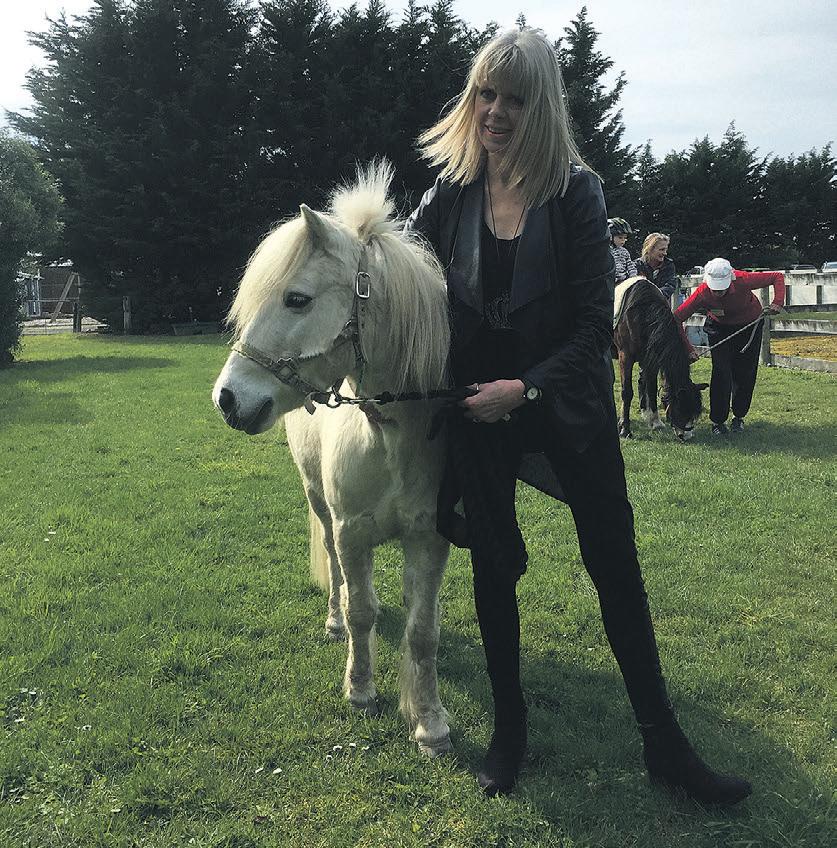

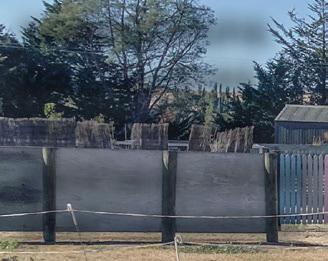

the riders and their horses, which improves rider wellbeing. They gain social and communication skills, too, along with a sense of independence.” Some even start to speak for the rst time.
Alongside individual riding, group classes are held so the riders are involved in a team sport. The indoor arena contains hoof ball, which the horses can kick along, changing their gait and mixing things up. The arena is lined with art, much of it provided by students from Makoura College, St Matthews Collegiate, and King Street Artworks.
As well as the indoor and two outdoor arenas, the RDA grounds have walking trails through native






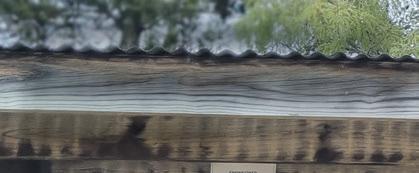



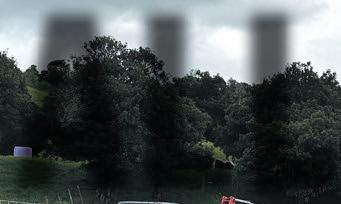

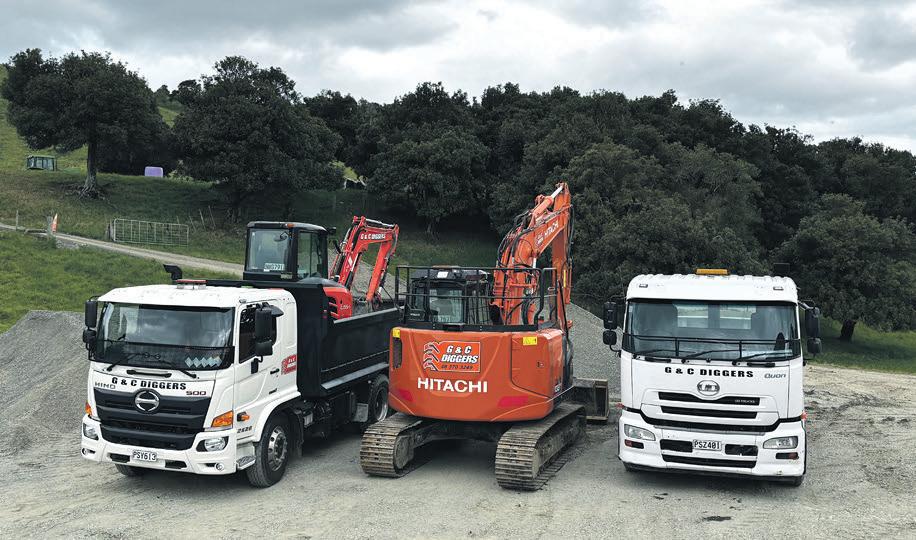




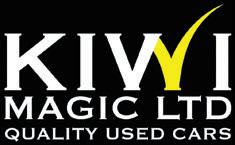

Riding for the Disabled originally began in 1962 from a Hawke’s Bay pony club. The establishment of the New Zealand Riding for the Disabled Association (NZRDA) happened ten years later.
Soon after, Logan and Ysabel Bruce, owners of a Masterton farm, became a liated with RDA.
“We were always involved in horses as a family,” Ian, one of eight siblings in the Bruce family, recalls. “There was hunting, show jumping, and three-day events. And dad was a horse-riding instructor.”
As committed Catholics, the Bruce parents were connected with Carterton’s Home of Compassion, which would bring children with disabilities to their farm for riding lessons. Then Ysabel saw an advertisement for the rst RDA conference to be held in Wellington in 1973. One thing led to another, with their riding lessons becoming a liated with RDA in February 1974.
“Mum spent years raising money for the branch before she passed away,” Marilyn says. “When Dad eventually sold the Masterton land, three acres were left to RDA to continue the riding sessions.” The land was later extended to


the current property of about seven acres. Ian and Marilyn remain committed volunteers and committee members at RDA’s Te Whiti Road grounds.
Many community groups, businesses, schools, and people support Wairarapa RDA. Individuals and organisations such as Rotary donate their time, their labour, and either goods or nancial donations. Some come and trim trees, repair roofs, and fence the arenas. Farmers donate truckloads of lime. The company Power Farming has donated a tractor for use at the complex. Individuals and businesses sponsor the horses and, twice weekly, volunteers are the “gold” that makes it all possible.
Ian and Marilyn can’t thank the donors, sponsors, and volunteers enough. The cost to families of their loved ones riding at Masterton’s RDA can be kept minimal, thanks to 50



LOGAN AND YSABEL BRUCE, THE FORCE BEHIND THE ESTABLISHMENT OF WAIRARAPA’S RDA
years of support. Logan and Ysabel Bruce have left a lasting legacy, supported by Wairarapa’s community and carried on by two of their children.
Volunteers are wanted and welcomed: currently, Masterton’s RDA is open for business on Thursday and Friday morning each week during each of the four school terms. Volunteers are o ered training and support, becoming part of a friendly welcoming team.
With more volunteers as sidewalkers and leaders of the horses, the entity could potentially o er the service to more riders, more mornings each week.
Contact RDA: if you’d like to volunteer or if you’d like to put someone on the waiting list for a year of riding. Referrals of all types are accepted. Call 06 378 6503 or email wairda@xtra.co.nz.




“RDA’s horses spend most of their lives munching grass in the paddocks,” Ian Bruce says. “It’s a wonderful retirement life for the horses. And then, twice a week, the horses are brought into the stables and a group of riders come to spend a morning with them. Volunteers also come in on a Sunday to exercise them, and Mel (our volunteer Vet), checks in on them every day. The horses have a lovely life with their herd mates.”
GRIFFIN: Sponsored by Lifestyle Property Management. At 24 years old, this gorgeous liver chestnut gelding is a reliable and kind elderly gentleman who loves cuddles.
JACK: Sponsored by Firewatch. Jack the Lad, a bay Welsh mountain pony, doesn’t like standing still, even though he’s turned 24.






BEN: Sponsored by Rigg Zschokke Ltd. Aged 17, this baycoloured gelding is sensible and reliable. All the mares have a crush on him.
ARGO: Sponsored by ROVA Chartered Accountants. Nine years old, this dark bay Kaimanawa mare loves her food and is in love with Ben.
Stace, a former RDA rider in Hamilton and now a Wairarapa resident, remembers his three- or four-years of riding from about the age of ve, as life changing. This was in the early 1990s.
“It was incredible,” he says. “The riding sessions were during lunchtime and early afternoon on school days, and I always looked forward to them. The experience turned me into a horse lover, but also let me experience freedom of movement.”
Born with the physical disability of cerebral palsy, Stace relished the feeling of “not being left behind,” which was his daily experience otherwise. “On a horse, I was on the same footing as the other
disabled kids in the group, and we could all keep up with each other.”
The therapy involved in riding was undoubtedly important on a practical level, he recalls, but “for me, that was the least of it. It didn’t feel like any of the other therapies I was required to do. The riding was empowering, con dence building, and gave me a sense of agency. And I experienced going fast and directing the pony. Mostly the pony obeyed.”
He has fond memories of watching the horse racing on TV with his grandma as she sat knitting but doesn’t think he would have stumbled over his love of horses if it hadn’t been for RDA.

MIMI: Sponsored by PGG Wrightson & Northco Insurance Brokers. Also 24 years old and a bay Welsh mountain pony, Mimi has decided she’s Jack’s girlfriend.
NOA: Sponsored by Ray White Carterton. A kind and gentle grey Welsh mountain pony, this little fella is aged 15.
PIXIE: Sponsored by Fresh Choice. Nine years old, this chestnut mare is a pretty, friendly young lady.
SPICE: An Appaloosa X mare, Spice is friendly and kind, aged seven years old, she likes to tease poor old Gri n.

“After RDA, I gravitated towards horses and even worked in a stable on and o for about 10 years from the age of 14 – it was my rst job.”
The stable was super inclusive. “They looked out for me, but I wasn’t treated as if my disability was a barrier in any way.”
It’s fair to say that the RDA experience can have lasting impacts on the quality of a person’s life.
“Riding changed how I felt about myself and how I approached life,” Stace says. “Therapy may be a primary driver for someone riding with RDA, but I wouldn’t underestimate all the other things it gives a person.”




